Introduction
You know what’s frustrating? Knowing you have the best products on Amazon, yet the sales aren’t just coming in. Now you find yourself in a position where you’re starting to doubt your products and ask yourself whether you made a mistake.
But don’t give up just yet! It’s important to examine and study your Amazon conversion rate first to determine what the problem really is because it may not even be your product.
Amazon is the leading e-commerce marketplace, and because of this, studying conversion rates can be rewarding and highly profitable for your FBA business.
In this article, we’ll be diving deep into the Amazon conversion rate and finding ways to improve yours. You’ll learn how to tweak your listings to drive sales and allow your products to stand against the competition.
What Is the Amazon Conversion Rate?
But first, what is the Amazon conversion rate?
In any business, the conversion rate is considered an important metric. Having a high conversion rate means you will have a higher conversion volume.
Simply put, the higher the conversion rate you have, the more money you'll make. Amazon conversion rate is the ratio of sales to page views for your product listings.

Why Is Conversion Rate Important for Amazon Sellers?
On an e-commerce platform like Amazon, the conversion rate is vital to every seller because it impacts your business’ profit, your organic search rankings, and your overall sales.
Here are some insights:
- A higher conversion rate will result in more sales and profit because a larger percentage of those who click on your product page actually end up buying your product. Therefore, more sales and more profit for you.
- You’ll also have a higher organic ranking position with a higher conversion rate. This means when buyers search for the product category you are selling on, your product ranks higher on the results pages.
- A higher conversion rate will also influence your traffic. If there is high traffic towards your product, this customer traffic signals the Amazon algorithm that your product is relevant for the specific keywords. Over time, this will boost the organic ranking of your product on the search engine.
When you have a higher conversion rate, it shows Amazon that you have a product that customers are searching for. It means you convert a high percentage of your visitors into paying customers. The Amazon search algorithm rewards you by giving your product higher organic rankings, which leads to more traffic and more sales.
What Is the Average Conversion Rate for an
E-Commerce Business?
What you should know is that Amazon’s conversion rates are significantly higher than the average e-commerce site.
The average conversion rates for top retailers on other e-commerce platforms are between 1 and 2% only. Meanwhile, Amazon sellers have average conversion rates of 13%, while Prime members have conversion rates of 74%.
What Is the Average Amazon Conversion Rate?
A good conversion rate differs for every type of product, but a good average Amazon conversion rate ranges between 10% and 15%.
It is a good habit to track your own conversion rates every month, so you establish a benchmark for your business’s ideal conversion rate and plan the next steps for improving it.
How to Find and Understand Your Amazon Conversion Rate
Now we arrive at this question: how do you find your Amazon conversion rate? You can follow these simple steps to get yours, which we’ll also discuss in detail in the following section.
1. Open your Amazon menu, go to Reports, and next, go to Business Reports.

2. Under Business Reports, you will see the Amazon Standard Identification Number (ASIN) category. Click on the “Detail Page Sales and Traffic By Parent Item.” You will then be given sales information on each product.

3. Navigate to the “Total Order Items” field for your product, then divide the total order items by your number of Sessions. Don’t forget to include those who left and returned.

You can calculate your products conversion rate easily by using this formula:

On its own, knowing your conversion rate for all of the products you want to sell is a must. Here are some factors and valuable insights you can use to understand your conversion rates further.
Sample Size and Time Frame
When you’re trying to determine your conversion rate, you need to consider your sample size (the number of visits on your product page) and the length of time you’re looking at.
For example, you don’t want to look at your number of sales compared to visitors over just a two-day time frame, or it could skew your conversion rate. So instead, you’d want to take sales over an entire month.
Sample sizes and wide time frames increase the conversion rate’s accuracy. The more data you have, the more reliable your results will be. Then, you can feel confident in your conversion rate.
Competition
Intense competition lowers the conversion rate since customers have more quality products to choose from. If the product you’re selling is highly-competitive, you can expect lower conversion rates because customers have more options.
Traffic Source
Higher conversion rates come from organic search results. So always look into whether the conversion rate is from organic Amazon traffic or PPC.
In order to get more traffic to your listing, you need to have competitive pricing compared to other listings in your category. Customers come to Amazon looking for a fair price on the items they need. If you price too high, you’ll have a hard time improving your conversion rate.
Profit
No matter how good your conversion rate is, it still doesn’t matter if you’re not making money. Always check your conversion rates if they are actually putting in enough revenue to cover your expenses and make you profit.
How To Calculate Your Amazon Conversion Rate
STEP 1: NAVIGATE TO REPORTS AND CLICK BUSINESS REPORTS

You will have access to a ton of information on the traffic and sales of your products on Amazon in your business report.
STEP 2: CHECK THE SALES AND TRAFFIC
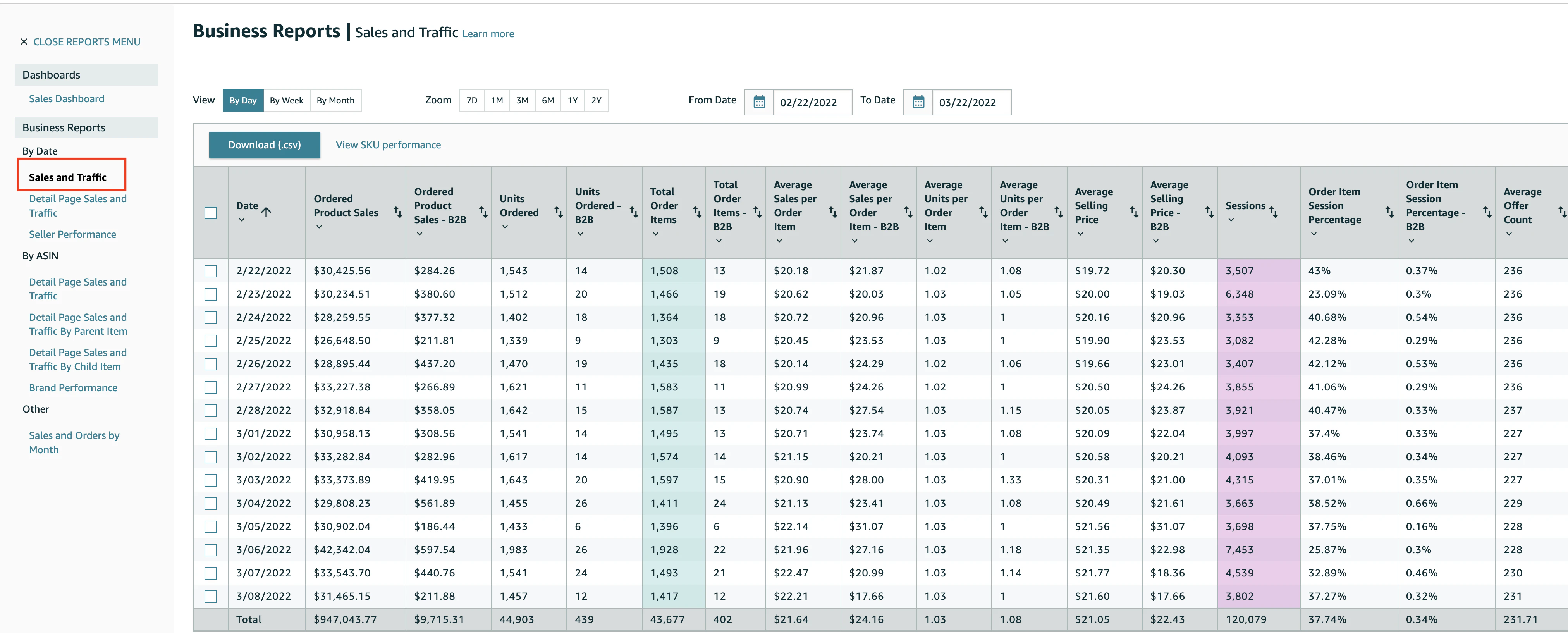
This report is a data range report, which means you can select the period you’d like to measure. By default, the report gives you data for the past 30 days.
STEP 3: LOOK FOR THE ROW NAMED ORDER ITEM SESSION PERCENTAGE
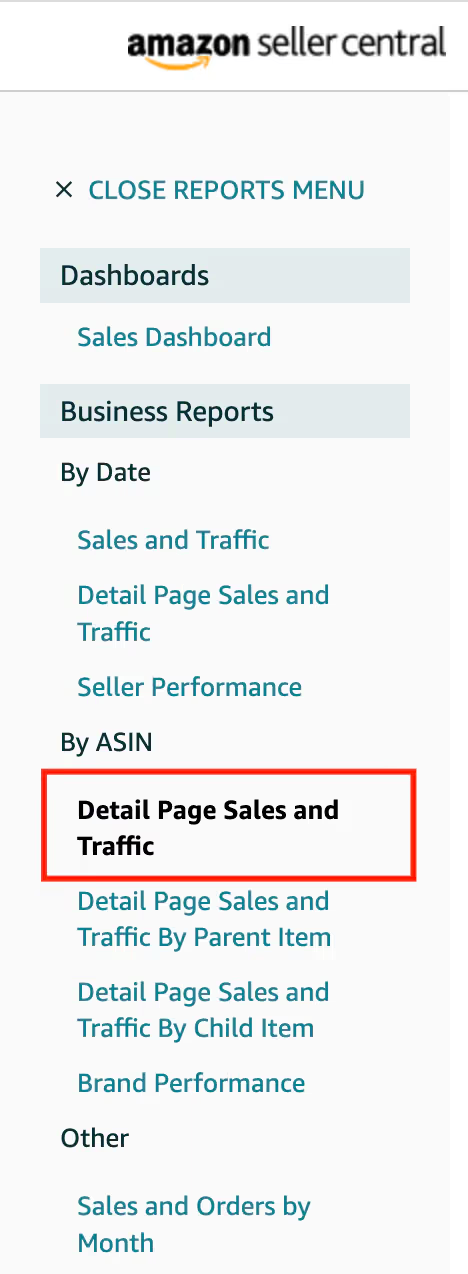
This is your conversion rate since this number represents the total units purchased compared to the number of shoppers who viewed the products.
STEP 4: THIS OPTION GROUPS ALL THE ITEMS TOGETHER
This method of getting your conversion rate groups all your products together, so if you want to view the Amazon conversion rate per product, you can proceed to the next step.
STEP 5: IN ORDER TO OBTAIN IT BY PRODUCTS, LOOK FOR “BY ASIN” REPORTS
Find the Amazon Standard Identification Number (ASIN) category, then click on “Detail Page Sales and Traffic By Parent Item.” You will then be given sales information on each product, including the “Total Order Items” field for your product of interest and the Sessions (including those who left and returned).
To get the conversion rate, you just have to divide the Total Orders by the Sessions.
Are There External Tools You Can Use to Find Your Amazon Conversion Rate?
The answer is yes, but it’s also essential to know how they work! Generally, they look into the item’s sales rank and the product category.
Want to find some great tools to calculate your Amazon conversion tool?
We’ve found the best tools you can use below.
Using Seller Central to Find Your Amazon Rate
Are you selling your product on Amazon Seller Central? Don’t worry because getting to your conversion rate is very quick and easy without any cost.
First, start by logging on to your Seller Central account. Then, if you go to the top menu bar, you will find Reports. From there, navigate to Business Reports, then click on Detailed Page Sales and Traffic Reports by Child Item.
Understanding Your Detailed Page Sales and Traffic Report
This date range report includes traffic information, Buy Box Percentage, and more wherein you can select the time period you want to be measured. By default, the report gives you data from the past 30 days.
Sessions
This is the visit to your Amazon pages by a shopper. All activity within 24 hours by one user is considered one session. So even if your product is out of stock, you will still see the sessions.
Page Views
Page Views is the number of views this product has had during the time period you set for your report.
Buy Box Percentage
Your buy box percentage is the percentage of page views during which the Buy Box or Add to Cart link appeared on the page, so your customers can add the product to their own cart.
However, for sponsored ads, your Buy Box must first be in the ads for your ads to be served.
You can still have a 0% Buy Box percentage even if you’re the only seller offering the product if your Buy Box isn’t available because of pricing issues.
Unit Session Percentage
This is your conversion rate for that particular product. It indicates the number of units purchased in relation to the number of people who viewed the products.
Finding Your Conversion Rate on Vendor Central
Are you selling on Amazon using Vendor Central? The not-so-happy news is that getting your conversion rate is difficult and expensive.
When it’s time to create your reports, you have two choices with Amazon Vendor Central:
Amazon Retail Analytics (ARA) Basic
With the Amazon Retail Analytics tool, you can access plenty of information on Sales Diagnostics, Inventory Health, Product Catalog, and Forecasting Tools.
ARA Premium
For US$30,000 a year, you can get everything included in the ARA Basic—plus additional reporting tools that are quite expensive.
The sad part is that the only report that will show your actual conversion rate for your items is available on the ARA Premium, which you can find in the Page Views and Conversion report.
Finding Your Conversion Rate on Other Amazon Platforms
If you’re selling books on the Amazon Kindle Direct Publishing (KDP) platform, which hosts Kindle and CreateSpace books on Amazon or Merch by Amazon, you won’t have access to the same page view and conversion data that are typically available on both Seller Central and Vendor Central.
However, you have other ways to check. You may check book sales, obviously, and your Amazon bestseller status or rank within Amazon overall and within each genre or category that your book shows up in. This ranking is a good way to see changes in sales or page reads.
But remember this: the higher your sales rank is, the less frequently your rank will get updated. For example, if your sales rank is 350,000, your rank will be updated once or twice per day. But if you’re at 15,000, it gets updated every hour.
This means that the lower your ASR, the more frequently there is movement.
If you have a physical book, on the other hand, that’s listed on the KDP marketplace, you can choose to open a Seller Central account so that you can add the book to your inventory. You will now be able to access the reports available for those selling via Seller Central and manually calculate your conversion rate.
Unfortunately, for those who are selling on Merch by Amazon, you currently have no method to access data and calculate your conversion rate.
What About PPC Conversion Rates?
Sellers looking to scale their listings know they need to use Amazon PPC. But when you’re using ads, you have to track your organic and paid conversion rates independently so that you can determine 1) when ads start to boost your organic sales and 2) when you can start pivoting your ad strategy to other goals.
So, let's look at the placement options available by ad type and the critical metrics you need to monitor to ensure your ads drive conversions while remaining profitable.
Placement Options

The ad placement options vary based on the type of ads.
- Sponsored Brands – Ads display right below the search bar, show multiple products, and are only for sellers on the Brand Registry
- Amazon Video Ads are available as an option under Sponsored Brand ads, but they show within the search results instead of at the top of the search.
- Sponsored Products – Ads display within the search results or in the “Sponsored Products Related to This Item” on product pages
- Product Display Ads – Ads display on product pages, primarily in the product details
With our clients, we’ve seen the highest conversion rates with video ads right now, followed by sponsored product ads — both show primarily in the search results.
If you find an ad placement that significantly increases your conversions, Amazon has an option for you to modify your bid with placement multiplies.
The top of search and product page placements can be modified from 0-900% — meaning Amazon will increase your bid by your set percentage when it predicts a customer is more likely to convert.
Advertising Metrics
When you start advertising, you gain a massive advantage because Amazon provides you with detailed ad reports that you can use to increase conversions across the board.
You need to understand the metrics and do some simple calculations to help you improve your paid conversions.
Impressions
Amazon tells you how many times your ad was shown. You aren’t charged by impression, but you’ll want to compare impressions to clicks so you can troubleshoot a low click-through rate.

Clicks
Clicks are what you bid on and what Amazon charges you for. The click is the first step in the path to conversion.
Ad Revenue
Ad revenue is easy to understand. It’s the total sales revenue generated from your ads.
Ad Spend
Alternately, ad spend is the total amount you spent on ads. You’ll also want to break down cost per click within your ad spend to give you a better understanding of what to bid.

ACoS
Advertising Cost of Sales (ACoS) is calculated by dividing your ad spend by revenue to learn how much it costs you per sale. ACoS is an Amazon-specific metric, but it’s starting to gain popularity on other ad platforms.
Amazon Conversion Rate: 23 Ways to Improve It!
Times are changing.
In the past, when a person walked into your physical store and asked questions about your products, you could expect a conversion most of the time.
However, when it comes to online shopping, things are totally different! The conversion rate is lower, even if customers have viewed and read about your products.
Keep in mind that this doesn’t always need to be your reality. Here are 24 ways you can improve your Amazon conversion rates.
1. Keep Your Price Competitive
On Amazon, it is highly recommended to keep your prices stable—with a few exceptions, which can also lead to better search rankings. These exceptions include new launches, cross-selling, holiday sales (like Black Friday or Cyber Monday), and stock clearance.
And by competitive, we don’t mean the lowest price. The lowest price often raises customer concerns about quality. Keep your price in line with similar listings, and you’ll do well.
2. Use High-Quality Images
Better search rankings result in better Amazon conversion rates. This is why it’s crucial to optimize your product’s images for the Amazon platform.
Make your product shine by taking the product photo against a white background, with the product occupying 85% of the image for your main image
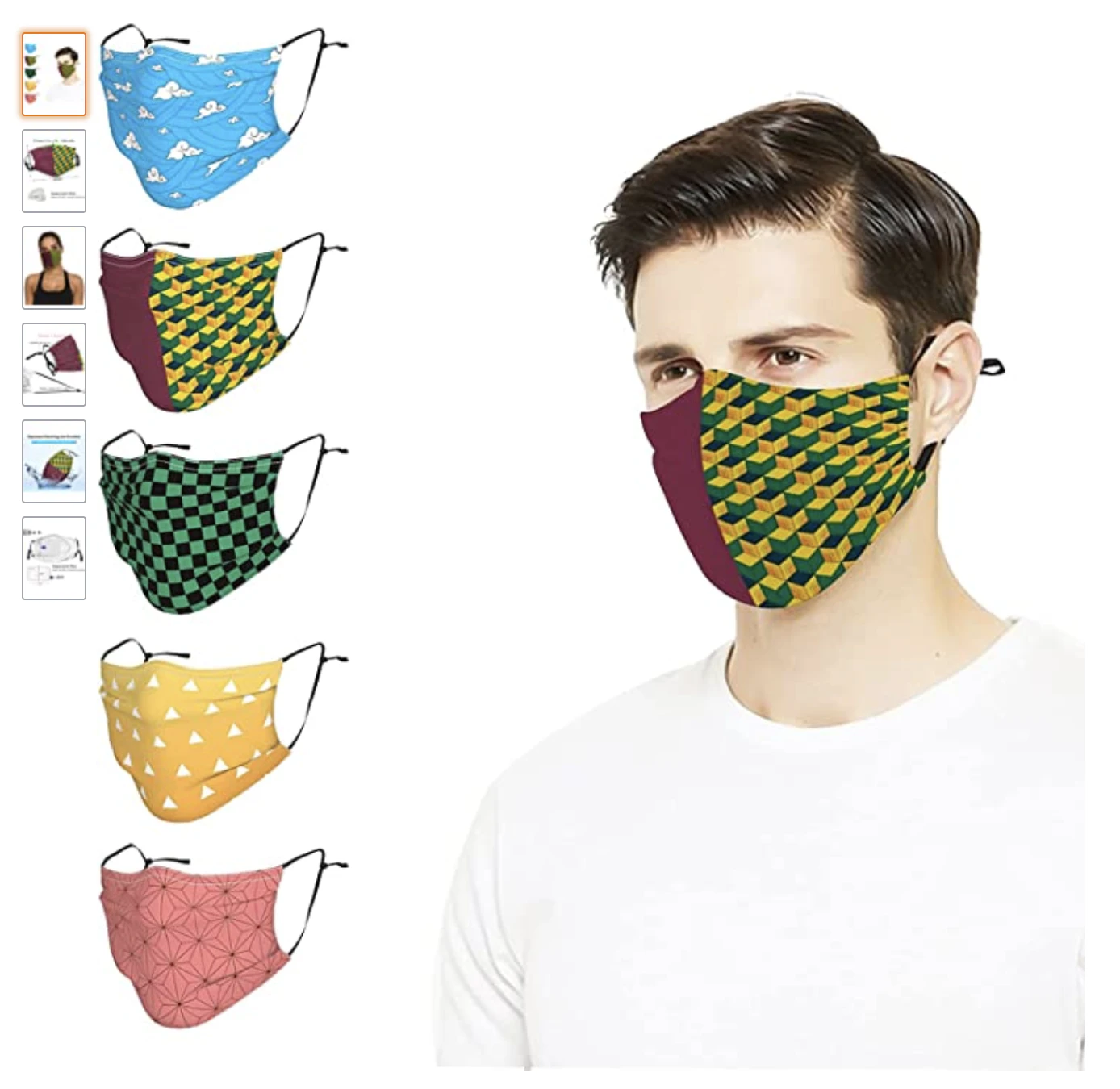
Then, make sure to include another image where customers can see themselves by having a model pose with the product or show the product in its intended environment, so they can see how it fits their needs and lifestyles.
3. Cultivate Reviews
Are you currently struggling to get reviews? Consider sending custom follow-up emails to buyers after people purchase from your Amazon store to remind them to leave meaningful feedback.
4. Benefit-Focused Bullet Points
The readability of your product description affects your conversion rate. Make it easier for customers to read about your product by adding benefit-oriented bullet points.
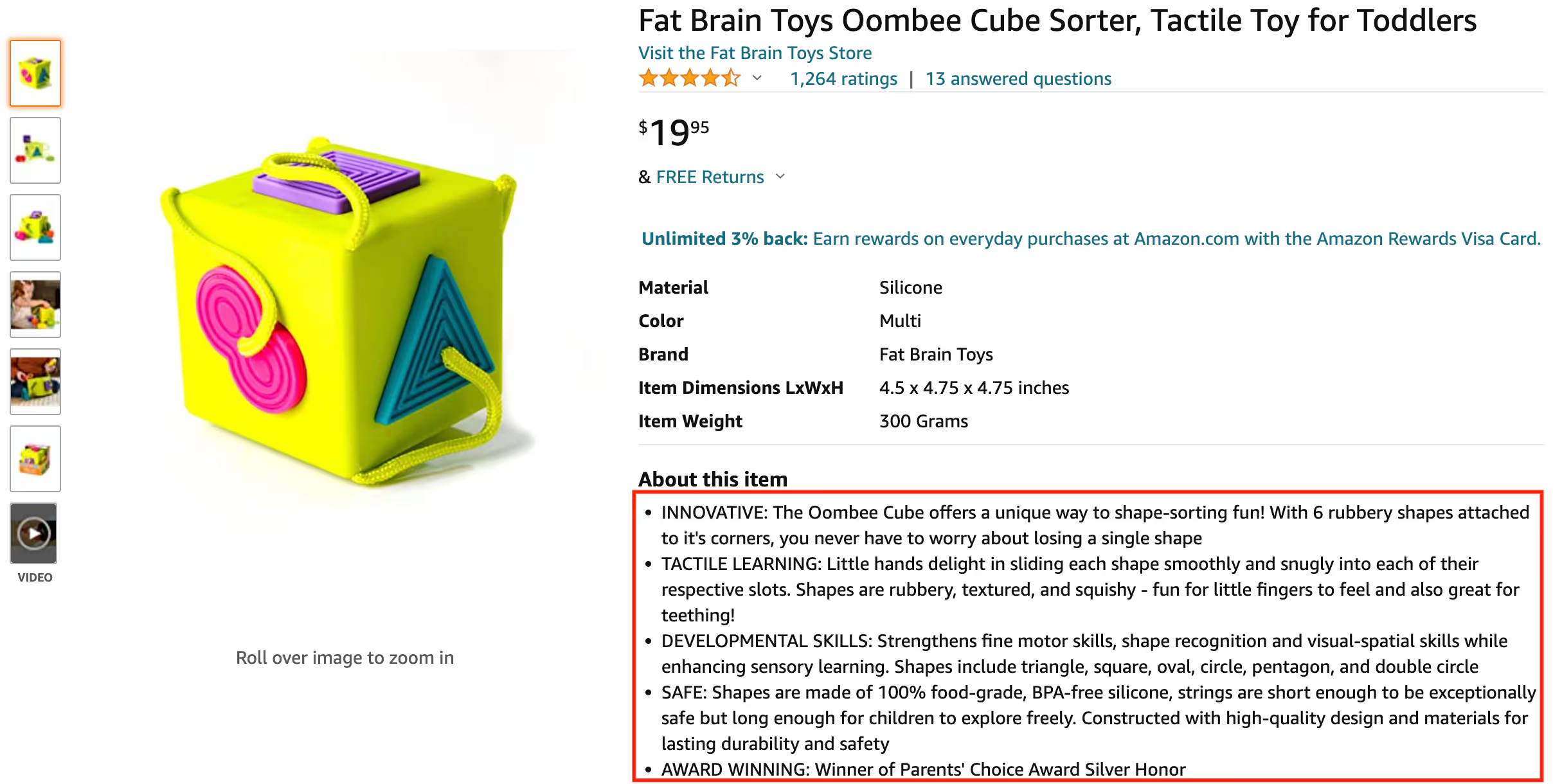
Instead of filling up the required number of bullet points, focus on quality. Avoid stuffing them with keywords, focus on the product benefits, then focus on its features.
5. Create a Connection With Your Content Through Video
Have you heard that we buy with emotion and justify with logic?
When we connect with a product, we’ll often find ways to justify purchasing it over another option. You want to use your listing to connect with your customer. And you want to make sure you’re speaking directly to your audience and the pain point they're looking to solve.
But the best way to connect is through video.
Amazon allows you to add a short video to your listings – typically 1-2 minutes – to help customers make a decision. Your product video is your chance to show how life would be better with your product and demonstrate it in detail.
6. Perform Exhaustive Keyword Research
You should know by now how crucial keywords are in your operations when improving your Amazon conversion rate. But in order to use the right keywords, you have to do your keyword research first.
There are plenty of Amazon keyword tools available, which can also help you track your keywords. You can enter keywords related to your product and view their search volume.
There are also great tools that show you high-ranking keywords – both short and long-tail – related to your product.
If you aren’t confident in your keyword strategy, read our comprehensive article on keyword research when you’re done here.
7. Follow Amazon’s Title Guidelines
Amazon wants product titles to be specifically formatted for each category. You want to make sure you're following the guidelines to keep the algorithm happy.
Your product title should include:
- Brand (all categories)
- Product name/type (all categories)
- Collection
- Model
- Material
- Size
- Color or pattern
- Quantity (i.e. 6-pack)
Every product title should start with the brand and product type. Then, you’ll add relevant details to your product.
Here are a few examples Amazon has provided as an example:

Remember, the goal is to stay within Amazon preferred formatting while adding essential product information toward the front of your title.
8. Join “Fulfillment by Amazon” (FBA) for Faster Shipping and Prime eligibility
One factor that affects whether customers buy your product or not is the shipping. Is it discounted? Is it free?
In order to capture a larger percentage of Amazon shoppers, sign up for FBA or Fulfillment by Amazon. This allows Amazon to hold your products at their distribution centers so they can quickly ship them once a purchase has been made. It also makes your products Prime eligible.
However, there are additional costs to this, and you may have to check this with Amazon to get a clearer breakdown.
9. Don’t Run Out of Stock
In Amazon, once a product goes out of stock, the rankings for the most important keywords where the product appears also go down.
This means that your Amazon conversion rate goes lower, which affects the rest of your metrics. That’s why you always have to make sure that you have enough stocks in your inventory when selling.
10. Anti-Abuse Settings
Adhere to Amazon’s Selling Policies and Seller Code of Conduct. Any violation of this code will surely affect your search rankings and, eventually, your conversion rate.
11. Optimize Listing SEO
When it comes to Amazon SEO, it's about more than just using keywords in your listing. It's about how they’re used.
There’s a hierarchy we’ll want to follow for your most important keywords.

Your product title keywords are the most valuable keywords for your listing, followed by bullets, backend keywords, and then the product description. Keep the listing hierarchy in mind as you’re adding your keywords.
12. Consider Unit Session Percentage in Amazon PPC
Understanding your conversion rate and investigating where the sessions and pageviews came from will help you make informed decisions, like whether you need to pay for ads, make more promotions outside the platform, or tweak your descriptions.
13. Use Amazon Landing Pages

One surefire way to boost traffic to your product’s page is by using your Amazon pages as landing pages when promoting your product externally, like on Facebook, Twitter, Instagram, Google…wherever!
14. Use Promotions
Another way to boost conversion rates is through paid or sponsored ads and promotions of your products.
Discounts will make it more likely for people to buy because they feel like they are getting a good deal – and they are!
When you offer a discount, your shoppers are also more likely to buy from you instead of moving on to another listing.
Take the opportunity to use discounts to build your email list, too! You can collect email addresses by offering coupons when you’re promoting the discourse on an external source.

15. Creative Marketing Tactics
Be creative. There are a lot of ways you can promote your products on Amazon with marketing strategies that can easily capture the eye of buyers and make them realize that their lives are in need of the product you’re selling.
One strategy to test is signing up to be a part of Amazon lightning deals. Customers browse the deals page to try new products they wouldn’t have sought out on their own.
16. Generate External Traffic With Social Email Marketing
Have you used the discounts we mentioned above to grow your email list?
Now make use of your database! Use email marketing to promote your products and drive traffic towards them. Just don’t forget to use your Amazon pages as your landing pages for the links in your email blasts.
16. Track When You Earn Amazon Badges
Have you ever browsed Amazon products and found products that have an “Amazon’s Choice” or “Best Seller” badge? If you’ve been using Amazon at all, it’s nearly impossible not to notice them.
Keep an eye for when you’ve earned these badges.
But while you’re still waiting for yours, you can increase your chances of getting it by following these tips:
We will use a hypothetical company to showcase how this calculation works.
A General Tech Store
- Use high-quality images
- Optimize your product titles and listings
- Make sure your price is in the sweet spot
- Manage your reviews as they come in, whether they’re good or bad
17. Use Scarcity
Drive the need for your product and traffic towards your product page using scarcity. In case you haven’t noticed, products that are running out of stock always let shoppers know this, even without having to click on the listing.
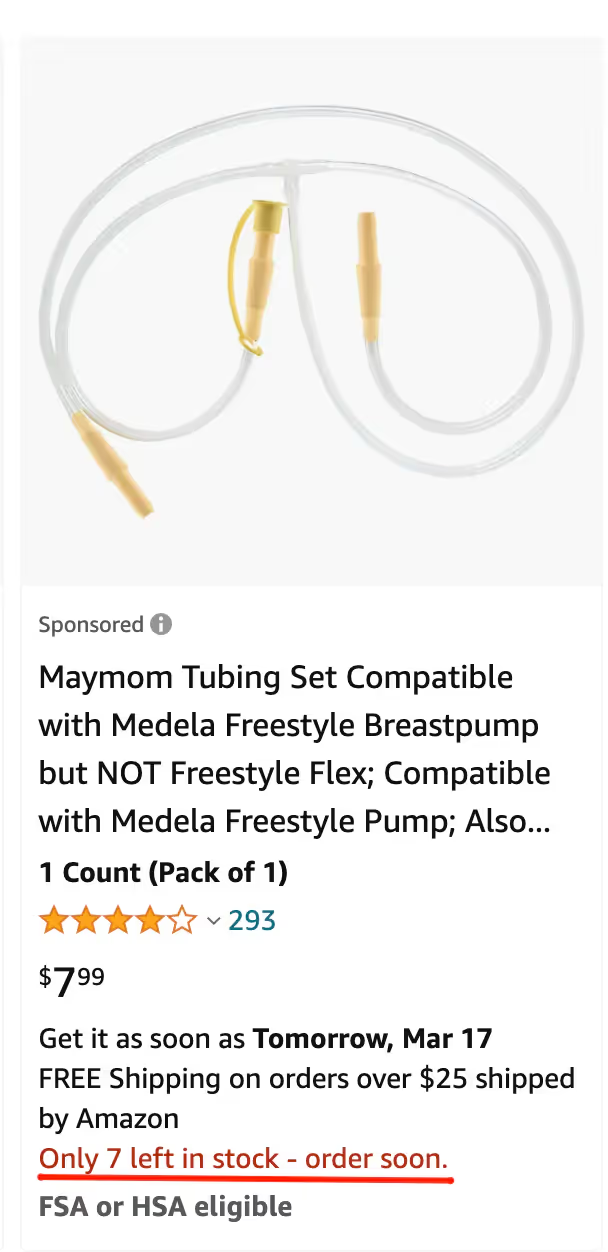
Use this to create a need in buyers whenever you’re promoting your products. If they feel like they need your product, they’ll order sooner rather than later to make sure it doesn’t run out!
18. Use the FAQs
As we mentioned in the earlier ways to improve your Amazon conversion rate, our descriptions should always be customer-centered.
One easy way to make it easier for buyers to know your product is by including frequently asked questions in the description.

19. Show Social Proof
You might think that the reviews are social proof enough, but you can do more. For example, adding photos of your product in action from actual users is powerful.
Try reaching out to influencers in your space that are willing to take some photos with your product that you can use in your listing. Unfortunately, Amazon doesn’t allow you to send products to influencers for reviews. Still, you can certainly send them to influencers to help get your product photos together in the hopes that having the influencer in the photo will speak to your target audience.
20. Target Hyper-Relevant Long-Tail Keywords
By including hyper-relevant long-tail keywords in your product listing, you send clear signals to the algorithm telling it exactly what your product is.
And, more importantly, you’re showing up in the search results for customers who know exactly what they want.
A customer who searches for “lamp” might just be starting to browse. On the other hand, someone searching for a “rustic 6-foot floor lamp” has already narrowed down their options and is likely much more ready to make a purchase.
Another bonus of hyper-relevant long-tail keywords is that they’re inherently less competitive, so it’s easier to show up at the top of the search results.
21. Build Warm Traffic With Affiliate Links
Have you ever read about a product and went straight to Amazon to try to find it? Chances are that you have. According to Statista, affiliate spending continues to see a sharp increase through 2022.

Amazon has a powerful affiliate program in place that thousands of websites tap into.
Perform a quick Google search defined affiliate websites that promote products and your niche and reach out to them and offer to let them test your product.
Affiliate websites rely on having fresh products to include in their content. And working with affiliate websites gives you warm traffic to your listing. The warm traffic is more likely to convert than a customer who finds your product among a list of similar options.
22. Use Parent-Child Listings
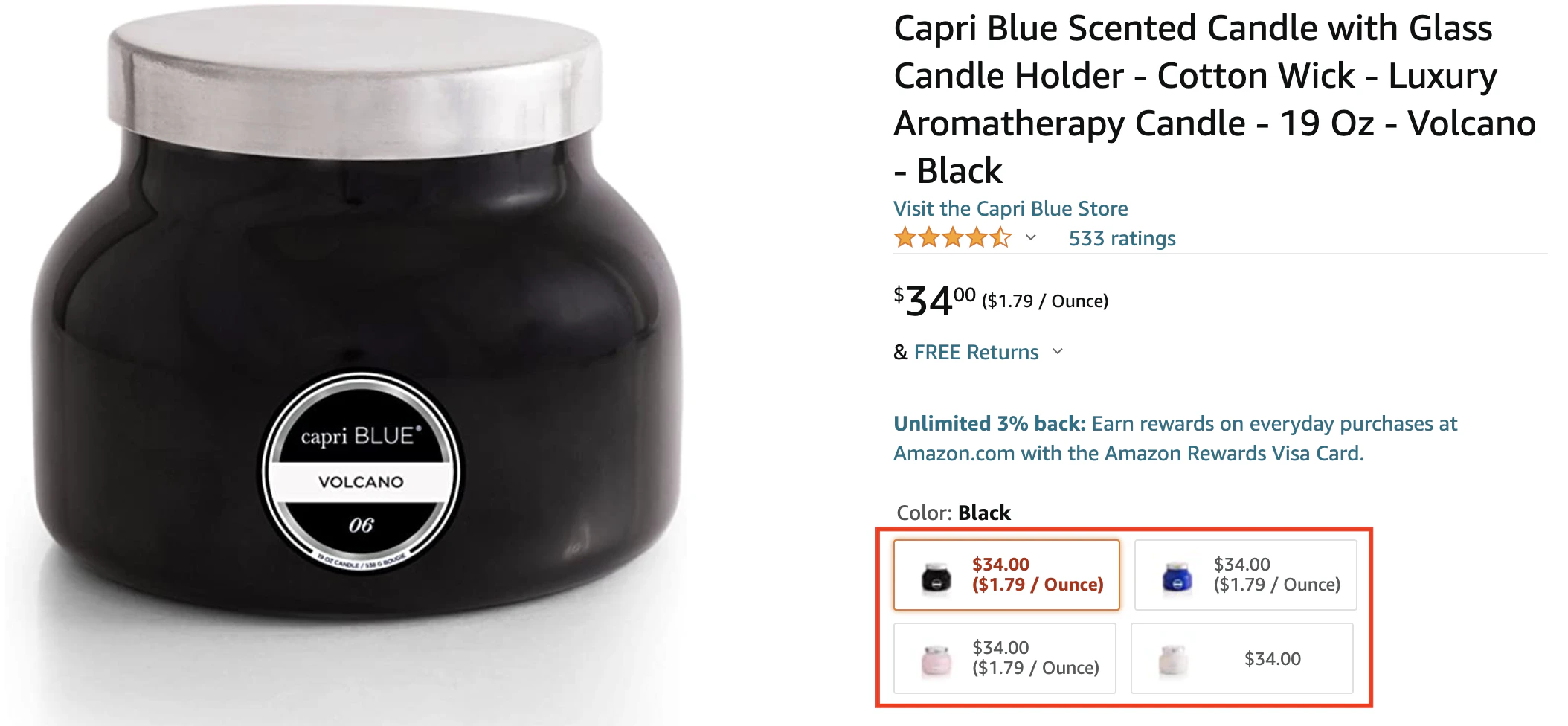
Parent-child listings utilize the force of your best-selling product variations to increase sales for all of your other variations.
When the algorithm decides what listings to show to customers, it looks at the overall sales for the listing, not per each variation. So, the cumulative conversions snowball to push the listing higher.
The momentum of one high converting variation can compound the success of the others that might’ve been buried in the search results had they not been grouped together.
And if you’re trying to increase conversions for a new product that’s complementary to a current best-seller, you can create a bundle as a child listing to gain customer awareness more quickly.
23. Establish and Protect Your Brand
If you establish a successful listing, you can bet that competitors will follow. Therefore, the only way to protect your listing is to create a brand.
Amazon offers a Brand Registry for sellers who have a trademark. The Brand Registry lets you take down counterfeit listings that infringe on your trademark.
Creating a brand does more than just protect you legally. When you create a brand, you become recognizable, and customers will return and search for you using branded keywords. Branded keywords can be a significant asset for improving your conversion rate long-term.
Troubleshooting a Drop in Your Amazon Conversion Rate
What happens if your conversion rate drops without warning? Chances are, there’s a clear explanation – and fix – if you’re willing to do a little work.
Now, some types of products see rapid shifts, and there’s very little you can do to stop them. These products are what are referred to as “seasonal.” Hopefully, you realized your product is seasonal before selling it. But, if not, it’s time to go back to the drawing board and find a new product while you wait for sales to pick back up.
For every other conversion rate issue, we’ve got some suggestions.
1. You have a drop in search ranking due to increased competition.
An increase in competition might be the most common reason you see a conversion rate drop. As competitors pop up mimicking your product and often at a lower price, you’ll start to lose sales.
The best way to protect your listing against the competition is to promote your brand far and wide to create brand loyalty.
Without loyal customers, you’re all susceptible to new surges in listings. Make yourself the next Kleenex to tissues, and you’ll stop having to fight to keep your audience constantly.
Instead of running paid campaigns for the sole purpose of generating sales, you’ll need to add brand awareness campaigns into the mix and ensure your product, packaging, and messaging are on point before you do.
2. There’s an increase in branded searches.
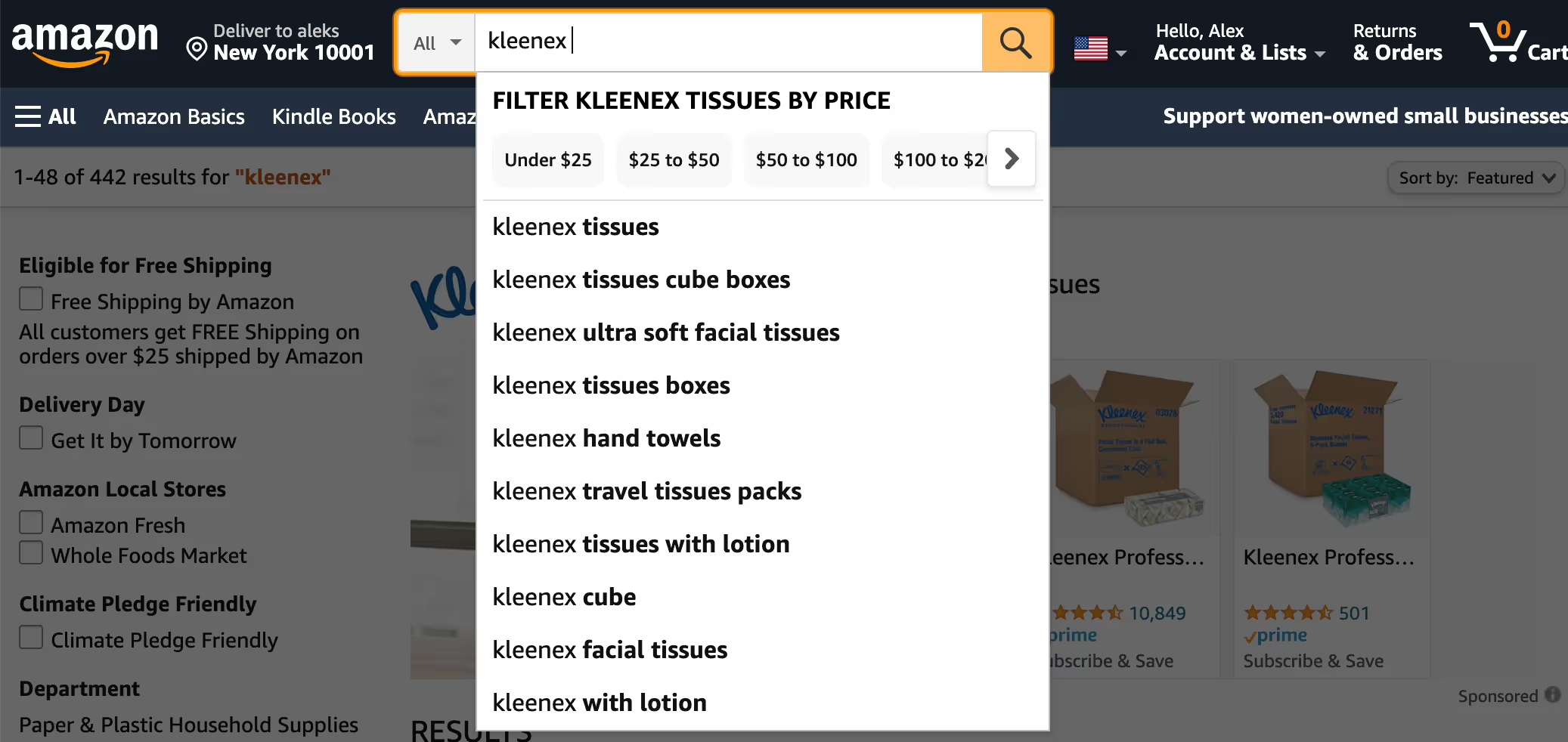
When you started selling your product, maybe there wasn’t a big brand name in the mix. But that can quickly change.
Once a competitor product gains mainstream attention, they will siphon some of the broad search term traffic to their branded keywords.
Like we mentioned before, you can combat it by building your own brand. Or you can work to make your listing more competitive for additional relevant but lower volume keywords to absorb the lost traffic.
3. There’s a shift in interest due to a new product on the market.
Products are constantly innovating. You probably tried to change up your product or marketing to pull attention from similar listings, and when a new listing does the same, you might see your conversion rate drop.
If it’s an innovation in how the product is marketed, you’re in luck. Shifting your marketing to tap into the craze is easier than adapting your product features.
But if the product features are innovative, you’ll need to change your strategy.
You can lower your price for your current inventory and update the next round of your product to keep your sales from going flat, as is common with older models. Or, you can try to find an ulterior selling point that sets your product up for another market the new product isn’t targeting. The second option isn’t always possible, though.
4. There’s a change in the trending search terminology.
Speaking of a change in marketing, sellers are always looking for a way to stand out even when they’re selling identical products.
The easiest way to accomplish it?
Change the terminology. For example, body cream and body butter are constantly shifting in popularity.
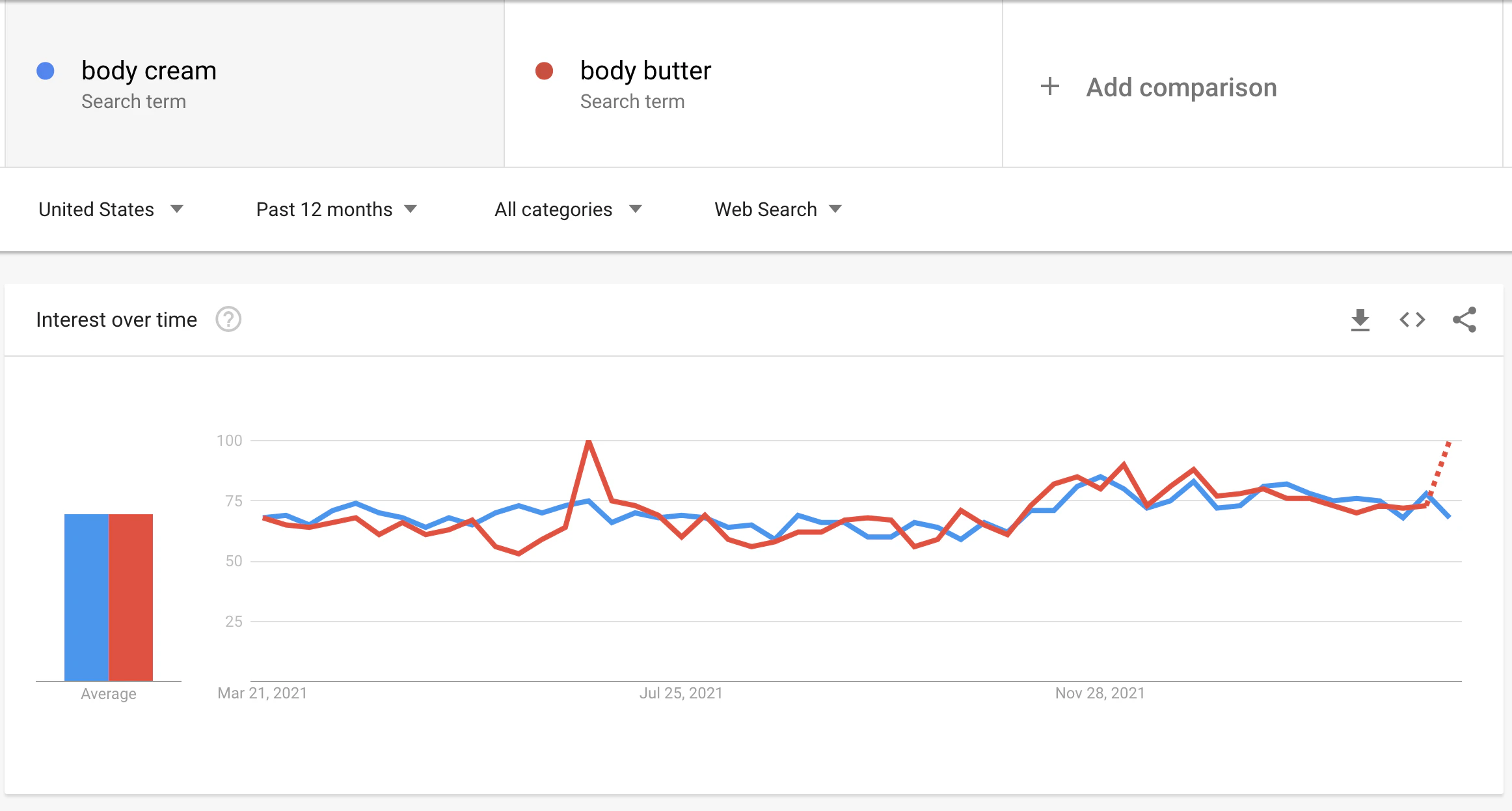
As new trends emerge, so will new keywords. If you want to stay ahead, you’ll need to closely follow who your audience follows and pay close attention to new products and marketing terms. Then, start testing them in your campaigns and backend keywords.
5. A competitor stepped up their PPC or marketing strategy.
When your main competitor – or a handful of competitors – step up their marketing, you might notice your conversion rate dropping.
You might think you can ride out the sales dip until their campaign push wraps… but that’s not the best idea. If their campaigns are successful, they’ll pull ahead in organic sales as well, and Amazon will keep moving their listing up in the ranking, further pushing down your sales.
The best defense is a strong offense. So don’t sit and wait to see if competitors are successful; just make sure you are either way.
6. You lost the Buy Box.
Step one in regaining the Buy Box is figuring out why you lost it in the first place.
Maybe you lost the Buy Box for your listing because you had inventory issues, or another issue is selling the product for significantly less.
The answer to recovering your conversion rate lies in remedying the underlying cause, which might take some time. So, you’ll want to look for less competitive keywords you can target in the meantime for extra sales.
7. You receive negative customer feedback.
Unfortunately, negative feedback happens. If you have hundreds or thousands of reviews, a little negative feedback can usually be absorbed without a conversion rate drop. But if you don’t have enough positive feedback to offset the negative reviews, you’ve got a problem.
The only real solution in this situation is to get more sales with paid traffic and follow up on them with a straightforward email Amazon allows you to send, prompting the customer to leave a review.
Keep in mind, if the negative feedback is a legitimate issue with your product – like a bad batch of inventory – you don’t want to start a sales push until the issue is fixed. Otherwise, you’re compounding your problem.
8. You experience a drop in outside traffic sources for your product listing.
As we noted earlier, warm external traffic can help you boost your conversions. But what happens when external traffic drops? How do you even know when it happens since Amazon doesn’t tell you where traffic is coming from?
Well, if you’re a registered brand, you can set up source tags to help you identify traffic sources.
Step 1: Navigate to Brands and click on Brand Referral Bonus.
Step 2: Click on Generate Referral Tags.

Step 3: Create your campaign.

Step 4: Finally, generate a tagged URL you can use with an easily recognizable tag name.
Now you have specific links to use when you're setting up external traffic sources so you can see if they stop sending customers your way.
Amazon Conversion Rate Tools
When setting up your Amazon listing, you’re taking your best guess at what customers need. But what if there’s a better way?
You can split test your listing to get definitive answers on what your customers prefer.
What Is Split Testing?
With split testing, two variations of your listing are randomly shown to customers, and you find out which one converts higher.
When it’s time to split test, you want to test elements independently. Otherwise, you won’t know what’s helping or hurting your conversions.
When setting up your Amazon listing, you’re taking your best guess at what customers need. But what if there’s a better way?
You can split test your listing to get definitive answers on what your customers prefer.
Top Amazon Split Testing Tools
If you’re an Amazon Registered Brand, you can run experiments on your A+ content. But if you aren’t a registered brand, or you want to run experiments on other listing elements, there’s no option to complete those split tests.
Fortunately, there are some tools available that can help.
CashCowPro
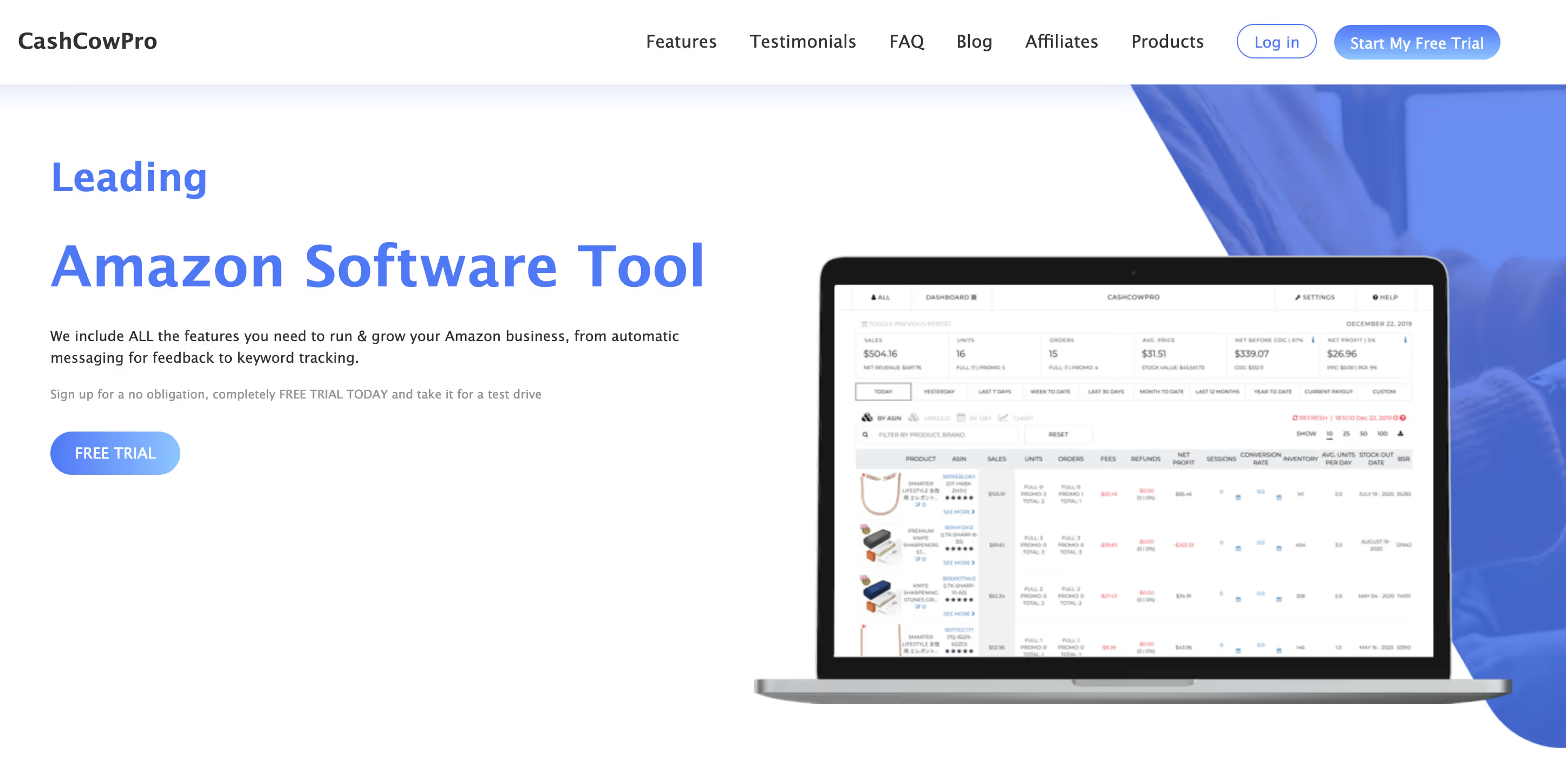
Listing Dojo
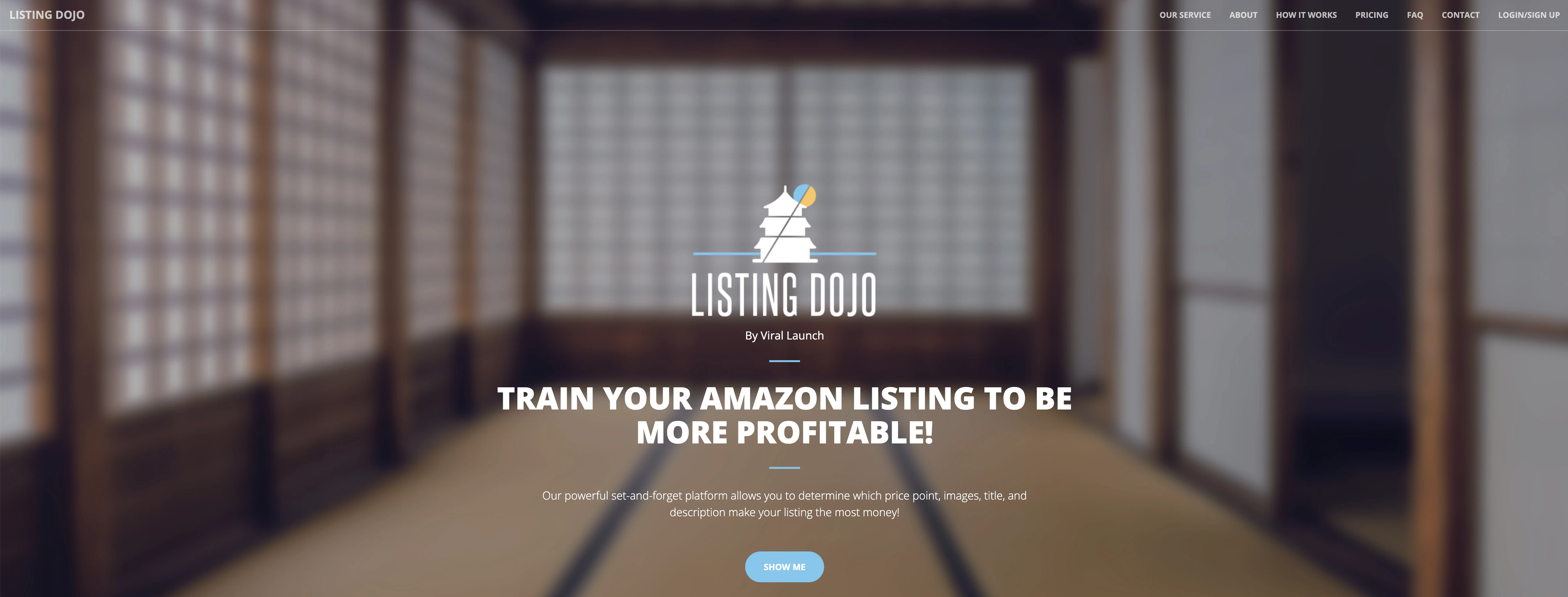
Listing Dojo is another tool designed to optimize your Amazon listings. It works very similarly to CashCowPro.
PickFu
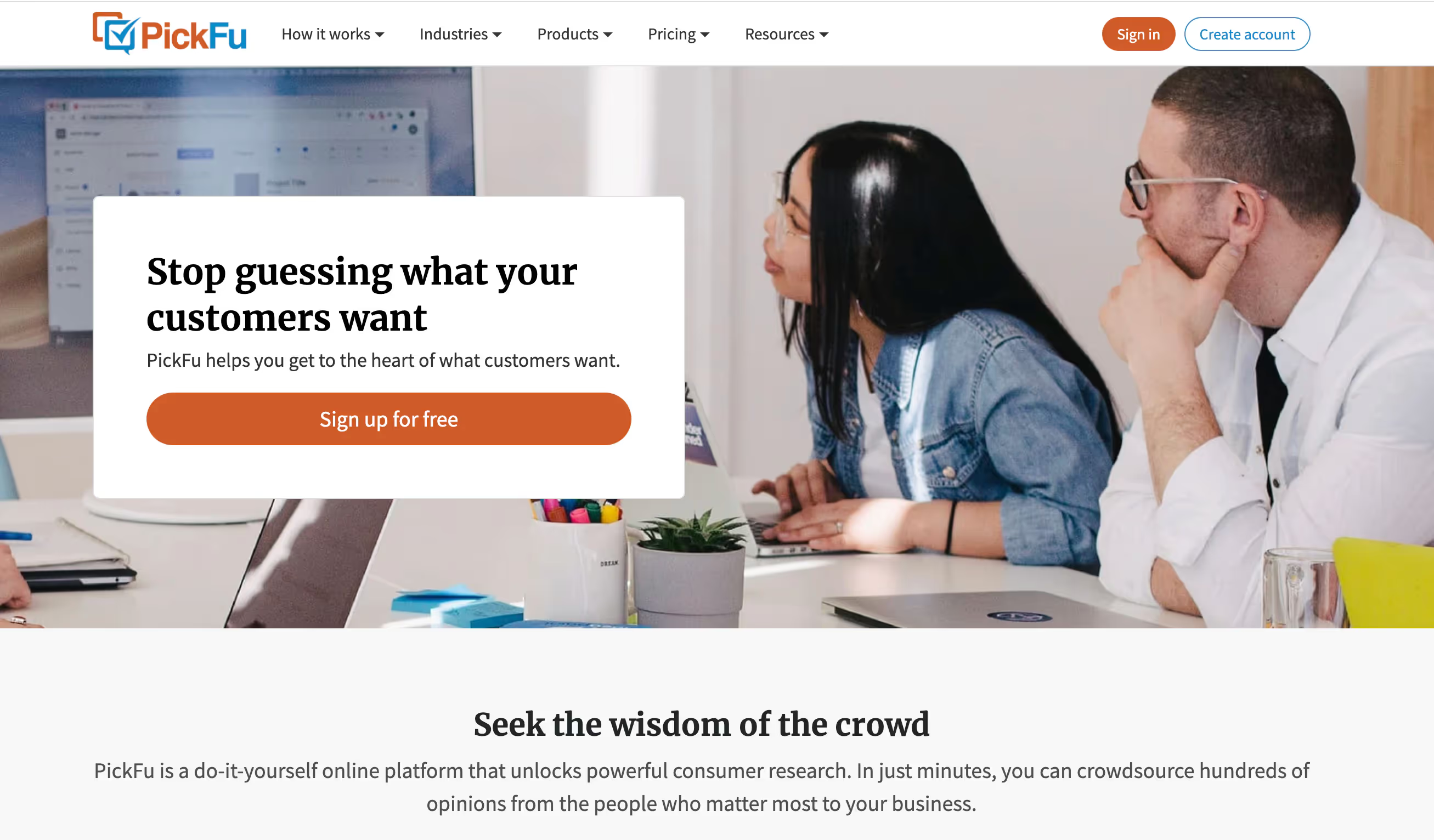
PickFu is different from the other split testing tools on the list. With PickFu, your live listing is not impacted. Instead, PickFu taps into its user base of Amazon shoppers based on the audience attributes you select to poll them on which listing information they prefer between two options.
Setting up a split test with PickFu is simple. You just select your audience targeting and include the details on your listing, along with questions you want to be answered, and that’s it.
There are some downsides to PickFu’s method. The main one being the audience polled isn’t a live audience actively searching for your product. And the other is that they aren’t able to interact with your listing.
What Impact Does Amazon Conversion Rate Optimization Have on Revenue?
Ultimately, you want sales to increase your revenue and overall profit. That’s the whole point of selling on Amazon.
So, let's make sure you understand exactly what an increased conversion rate can do for your bottom line.
A Look at the Numbers
When settAs we noted at the beginning of the article, conversion rates on Amazon are much better than average ecommerce conversion rates. If you run an independent store, you know that conversion rates are often as low as 2%, whereas, on Amazon, they’re estimated to be around 10-13% or higher.
So, let’s take a base conversion rate of 10% for our fictional product and start looking at how an increased conversion rate impacts sales.
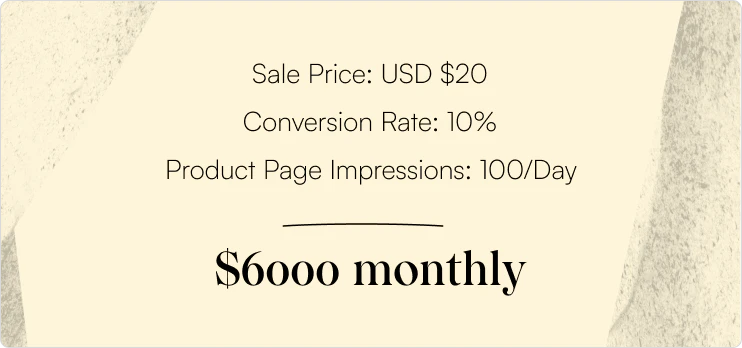
In that example, you’d get ten sales per day for a total revenue of $200 a day or $6,000 a month.
But what happens when we bump that conversion rate up to just 12%?
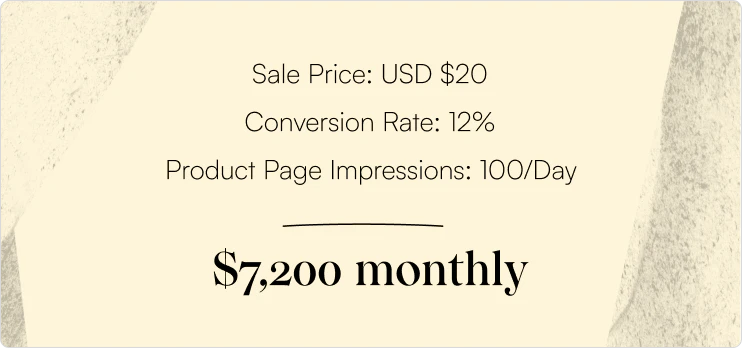
Now, the product brings in $240 each day or $7,200 per month. That small bump in the conversion rate quickly compounds over time. If you kept your 12% conversion rate for a year, you’d make an additional $14,400 than if your rate stayed at 10%.
It goes without saying that even small bumps in your conversion rate are worth the effort. However, not every seller has time to put in the work to increase their conversion rate and keep it up.
What Could Managed Amazon Listings Do for Your Conversion Rate?
The goal for optimizing your Amazon conversion rate is, of course, to make more money. But in order to do so, you will have to take time to understand how Amazon as an ecommerce and search engine platform works.
It takes time to understand the metrics and make the most out of the marketplace features to help customers easily decide to purchase from your store.
Or, you could save time – and potentially loads of lost sales – and have your listing managed by experts that know what works and what doesn’t.
Managed listings mean:
- You don’t have to waste time and money with trial and error tactics.
- Your brand is protected from beginner mistakes that can set your product growth back.
- You have a team working in the background to make sure your conversion is consistently rising, not dropping.
With one of our clients, we were able to:
Insert result details from Amazon case study
Want to discover how we manage Amazon listings and improve conversion rates?
Check out what we can do.
Final Thoughts
While it will take time to learn and improve your Amazon conversion rate, it is both worth the effort and the time.
This will give you a stronger grasp of your products and your brand (or your store), which will make optimizing your products )better. In the long run, this will make your store profitable for you.














.webp)

.webp)








.webp)










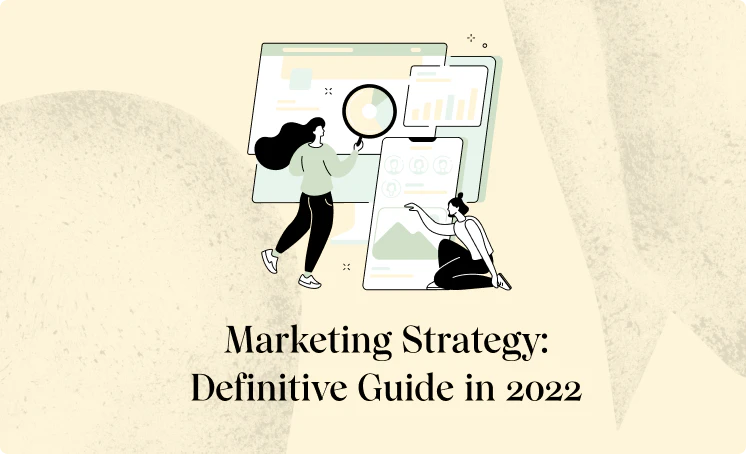






























.webp)






